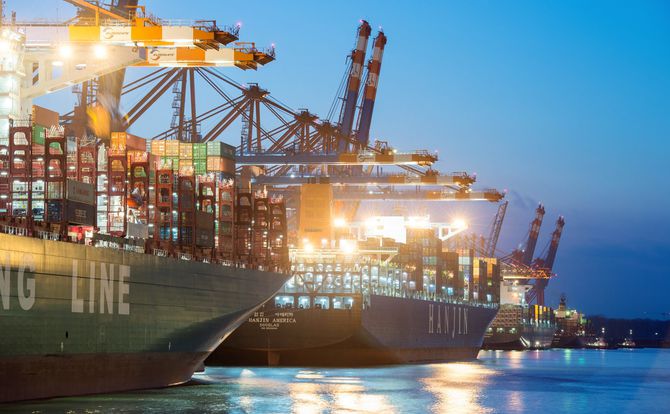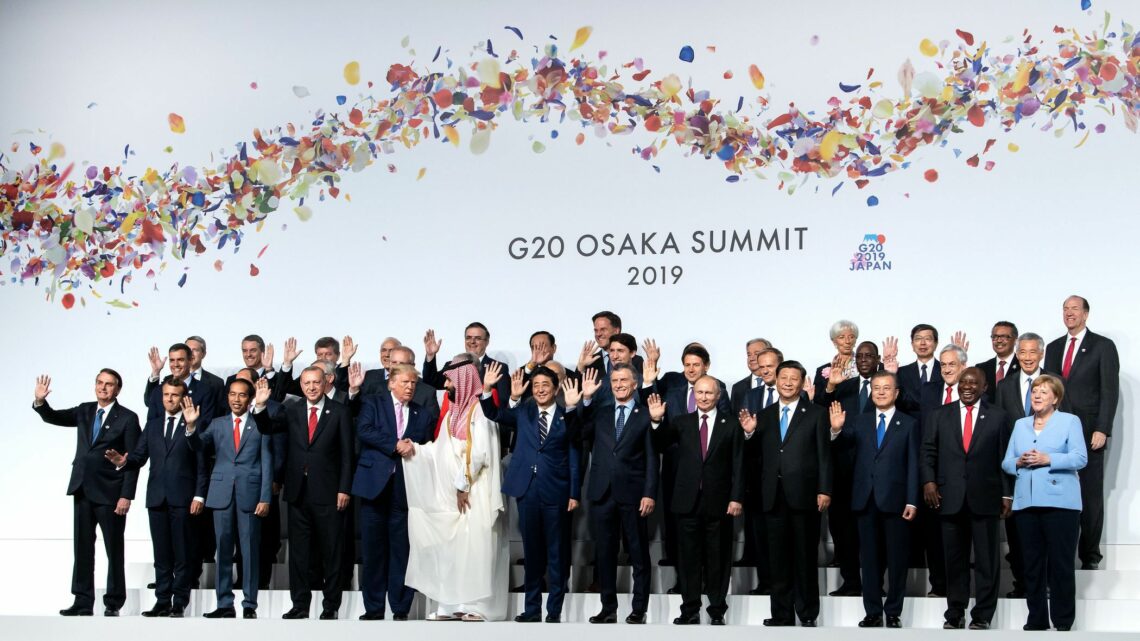The EU’s next challenge: Emerging markets
For the global economy, the road ahead is unusually clear – it is headed for a gentle slowdown. But that is no reason for complacency. The next wave of trouble is already visible in the developing countries, which are highly vulnerable to rising interest rates. The EU could do much to prevent the economic slowdown if it cared to.

In a nutshell
- Global economic growth is headed for a well-predicted, relatively gentle slowdown
- The danger spot is low-income economies, which are vulnerable to rising interest rates
- Western economies, especially the EU, can avert this crisis if they have the will to reform
All major economic indicators seem to confirm our earlier insights: global economic growth is losing momentum but remains satisfactory. Worldwide gross domestic product (GDP) now appears headed toward annual growth of about 3.2 percent, somewhat slowed from 3.8 percent rate in 2017 and 3.7 percent in 2018.
Blame for the slowdown, which began about a year ago, falls mainly on Sino-American trade tensions (world trade volumes have held steady); the slowdown of the Chinese economy (the most reliable forecasters now predict 2019 GDP growth of about 6 percent); and disappointing performance in the European Union, where Eurostat’s Economic Sentiment Indicator (ESI) for the EU-28 countries fell to 102.3 in June 2019 from 111.5 a year earlier. To complete the picture, observers also draw attention to geopolitical tensions and other sources of uncertainty.
Clear picture
In this report, however, we will argue that the global economic picture is unusually clear, and that it is inaccurate to label its more unpleasant aspects as “uncertainty.” For example, China’s gentle slowdown was predicted long ago, while the chronic sluggishness of the EU economy has a very precise and well-known etiology, including overregulation, high levels of public debt, and an intolerably heavy tax burden.
The performance of the global economy in recent years has indeed been abnormal, because it was driven in many regions by expansionary monetary and fiscal policies. These produced growing indebtedness and allowed inefficient producers to avoid restructuring.
Most people do not expect a crash – and rightly so, in our opinion.
Letting weak companies kick the can for a few more years gave Wall Street another reason to celebrate. It should not be overlooked, however, that investors have increased the share of gold in their portfolios and that the yield curve has inverted, with short-term rates now running higher than long-term rates. These are ominous signs.
Most people do not expect a crash – and rightly so, in our opinion. However, the real economy will not rebound in the near future, and policymakers are running short of ammunition to keep the ball rolling.
Developing situation
We know what this scenario means for the major economies: vociferous populism in the EU, simmering political tensions in China, and business as usual in the U.S., Japan and Russia. There is one very prominent exception to this well-understood basket of global risks, however.
Over decades of relatively easy access to cheap financing, a large number of developing economies frittered away colossal opportunities to put their finances on solid footing. Soon they may find out just how vulnerable they are. In a variety of ways, these countries will play a key role in shaping future geopolitical scenarios. What follows is a brief consideration of the critical variables involved and how their interaction could shape the global economy.
Debt servicing
In recent years, with notable exceptions like Argentina and Turkey, emerging markets have enjoyed rather favorable financial conditions. Cheap borrowing, however, has seldom led to major structural changes in most developing economies. Rarely have we witnessed the rise of new, efficient companies able to operate as credible commercial or manufacturing partners to the established global corporations.

What this means is that borrowing costs have mainly served to shore up the balance sheets of existing, ailing companies, and perhaps insulated them somewhat from outside competition. Toward the end of last year, as interest rates seemed set to rise, bad borrowers around the world fretted. Regrettably, however, the world’s central bankers had second thoughts, and in some cases decided to reverse gears. That brought a sigh of relief from bad borrowers, who simply kept on borrowing, in many cases recklessly.
To be sure, while public debt servicing flows from developing countries to foreign lenders are now running at about $300 billion a year (compared to $200 billion in 2008 and close to $400 billion in 2014), the day of reckoning still seems far away. Yet as time passes, it becomes increasingly evident that many countries and companies will not be able to reimburse their creditors. How the two sides work together to resolve these unpayable public and private debts will have implications that go well beyond the workings of financial markets. Some major creditors and central bankers will be in for a nasty surprise.
Double whammy
A second issue concerns the real economy. If one looks at the average annual GDP growth per capita over the past decade, middle-income countries have expanded at about a 4 percent rate, but low-income countries grew by a mere 1 percent. The war on poverty has been an unmitigated success, but far too many developing economies still depend heavily on the price of raw materials and easy financing. Of the enormous sums they have borrowed, much has gone to sustain current consumption or been siphoned off by corrupt officials. It is therefore no surprise that many of these economies remain vulnerable, and some are hopeless cases.
What happens next depends on international creditors and the markets. One possibility is that some investors will sense danger and gradually pull out. This is a realistic prospect, especially for financial investors seeking better long-term returns and willing to reduce their risk profile when an opportunity arises, even if it involves taking short-term losses. If that happens, slightly higher yields on high-grade bonds will hit developing countries twice. Their debt service costs will rise along with global interest rates, while investors will move away from low-grade debtors and back to developed markets.
The next six months will present something like a best-case scenario.
The likelihood of this scenario depends on what Western central bankers do. If they are determined to pursue relatively loose monetary policies, funds will keep flowing toward bad debtors offering high coupons and relatively strong currencies. Given the latest policy signals, we believe that this is what will happen and that creditors will not pull out anytime soon.
Emerging and developing economies will thus be given more time to reschedule their debts and possibly shift away from dangerous or politically demanding lenders, such as China. Countries that take advantage of this opportunity could become attractive destinations for investors in search of new equity markets. Indeed, the next six months will probably present something like a best-case scenario for policymakers and entrepreneurs in the so-called Third World – provided they start putting their house in order.
Western choices
Seen from the West, picking the right countries and the right companies is going to be the name of the game for private investors. At the same time, however, Western governments must clarify what role they want to play.
Two options are on the table. Political leaders may want to counter China’s geopolitical offensive, which includes the Belt and Road Initiative as well as massive investments in foreign companies and infrastructure. Or they may choose to do nothing, which is equivalent to waiting for the Chinese efforts to falter and possibly fail.
Lifting EU trade barriers would reward developing countries that prioritize free-market reforms.
The first option requires Western governments to do what it takes to stabilize political risk and promote badly needed reforms in a number of economies. Obvious candidates in this respect are Mexico, Chile, Indonesia and Pakistan. No grand relief or financial assistance projects are necessary. Instead, two policy adjustments would be needed from the EU. One is trade liberalization, and the other is deregulation.
Current anxieties about the U.S. and China as reliable commercial partners offer unique opportunities to present the EU as a safe haven for world exporters, especially emerging and developing countries. Lifting EU trade barriers would guarantee high returns to exporting countries that prioritize political stability and free-market reforms.
EU opportunities
Such action would also strengthen the EU’s geopolitical image. Brussels would no longer serve as a seat of compromise and the U.S.’s rather supine partner, but start setting new agendas. Recent agreements between the EU and Mercosur bode well in this regard. More of the kind is needed. For example, regulation has become a significant trade barrier that imposes substantial costs on all producers, especially those selling low-quality goods outside the supply chains of large multinational corporations.
Regrettably, the West, and the EU in particular, has not shown the vision required to go beyond half-measures. Dismantling tariff barriers but leaving regulation in place is the most likely route. This would be an unfortunate choice.
The balance of 2019 and 2020-2021 are shaping up to be a time when emerging and developing markets will need open and not overly intrusive partners. This interval presents the EU with a unique chance to retrieve part of the prestige it has lost in the past decade. Likewise, European entrepreneurs will encounter new opportunities to help new markets grow. Prompt action could avert a major financial crisis in countries that can least afford it.







